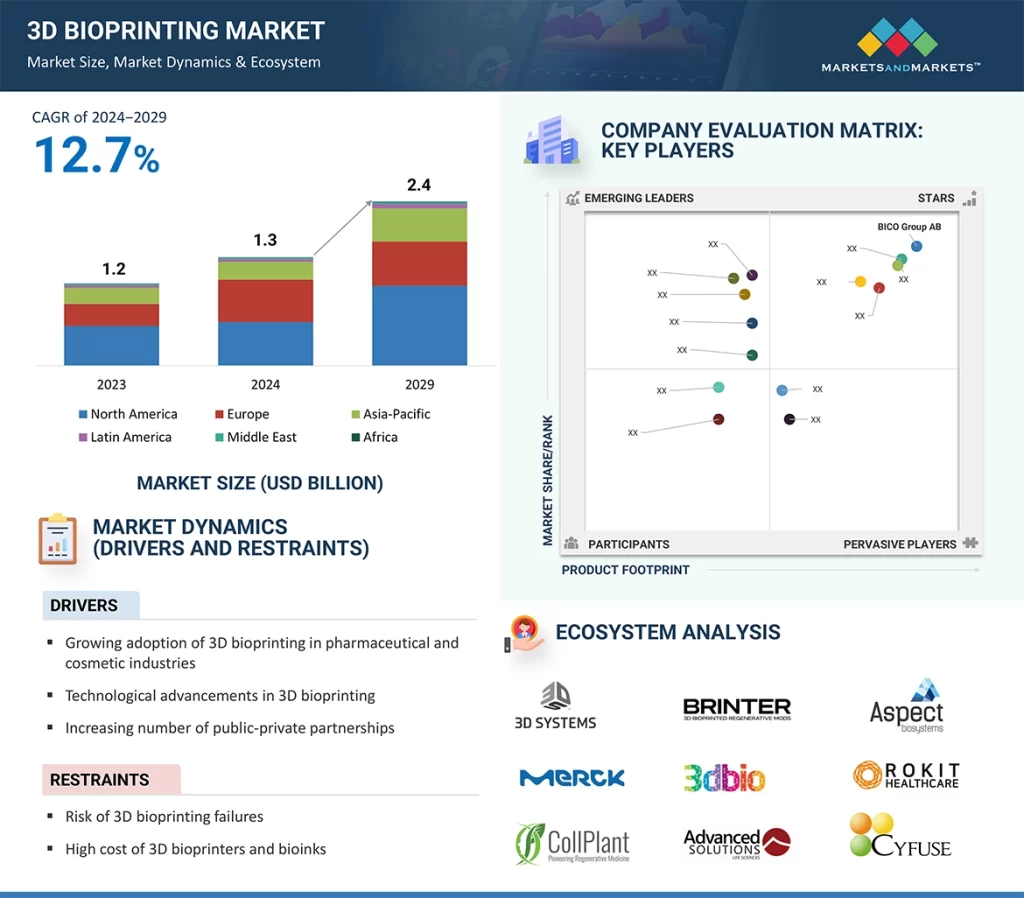The 3D bioprinting market is experiencing significant growth, driven by technological advancements and increasing adoption across pharmaceutical and cosmetic industries. Valued at approximately USD 1.2 billion in 2023, the market is projected to reach USD 2.4 billion by 2029, with a compound annual growth rate (CAGR) of 12.7%

Key Market Drivers
Technological Advancements: Innovations in 3D bioprinting technologies, such as the development of advanced bioinks and bioprinters, have enhanced the precision and efficiency of tissue fabrication. These advancements enable the creation of complex tissue structures, facilitating more accurate drug testing and disease modeling.
Pharmaceutical and Cosmetic Industry Adoption: The pharmaceutical sector utilizes 3D bioprinting for drug discovery and development, allowing for the creation of tissue models that closely mimic human physiology. Similarly, the cosmetic industry employs bioprinted skin tissues for product testing, reducing the reliance on animal testing and improving safety assessments.
Public-Private Partnerships: Collaborations between academic institutions, research organizations, and industry players have accelerated the development and commercialization of 3D bioprinting applications. These partnerships foster innovation and facilitate the translation of research into practical solutions.
Regional Insights
North America currently dominates the 3D bioprinting market, accounting for a significant share due to well-established healthcare infrastructure and substantial R&D investments. The U.S., in particular, has seen extensive adoption of 3D bioprinting technologies in research and clinical settings.
The Asia Pacific region is anticipated to witness the highest CAGR during the forecast period. Factors contributing to this growth include a large population base, increasing healthcare investments, and rising partnerships aimed at enhancing healthcare outcomes
Challenges
Despite its potential, the 3D bioprinting market faces challenges, notably the high costs associated with bioprinters and bioinks. These expenses can be prohibitive for smaller research institutions and startups, potentially limiting innovation and slowing market expansion.
Growth Opportunities
Organ Transplantation: The shortage of donor organs presents a significant opportunity for 3D bioprinting. Advancements in bioprinting functional tissues could eventually lead to the fabrication of transplantable organs, addressing critical needs in healthcare.
Personalized Medicine: 3D bioprinting enables the creation of patient-specific tissue models, facilitating personalized treatment plans and improving therapeutic outcomes.
Regenerative Medicine: The ability to bioprint tissues and organs holds promise for regenerative therapies, potentially restoring function to damaged tissues and improving patients’ quality of life.
Conclusion
The 3D bioprinting market is poised for substantial growth, driven by technological innovations and increasing applications in various industries. While challenges such as high costs persist, ongoing research and collaborative efforts are expected to overcome these barriers, unlocking new possibilities in healthcare and beyond.